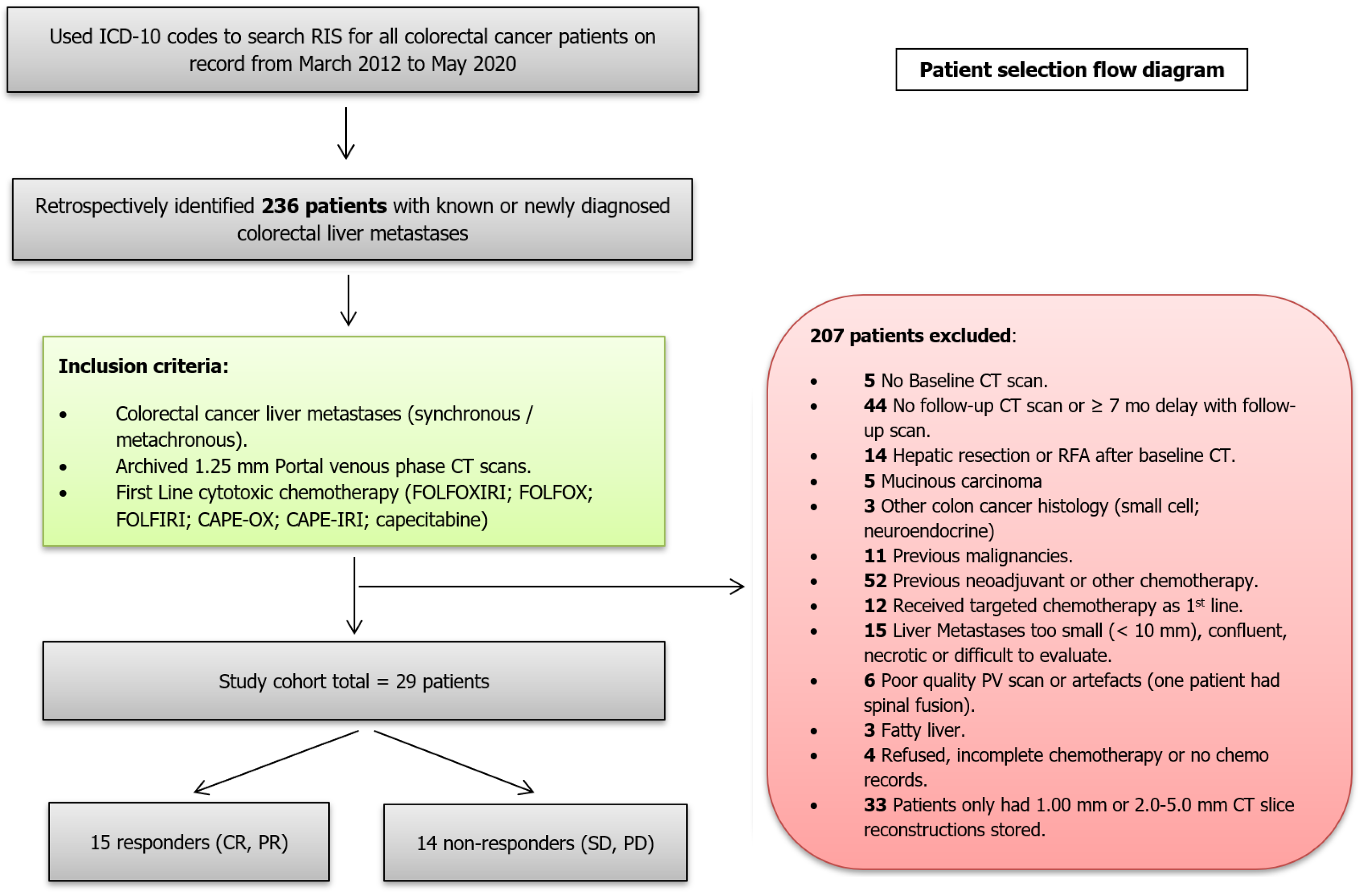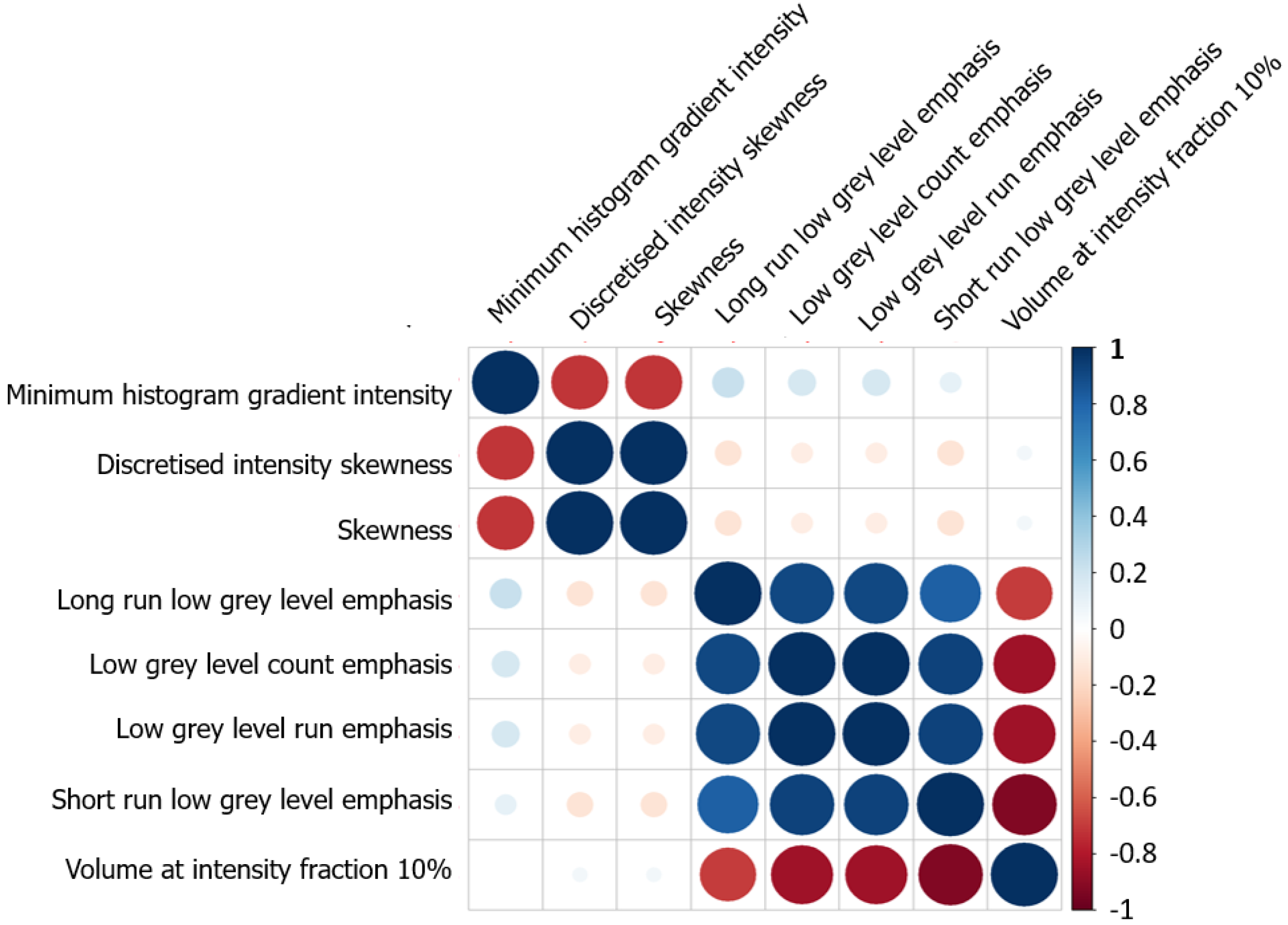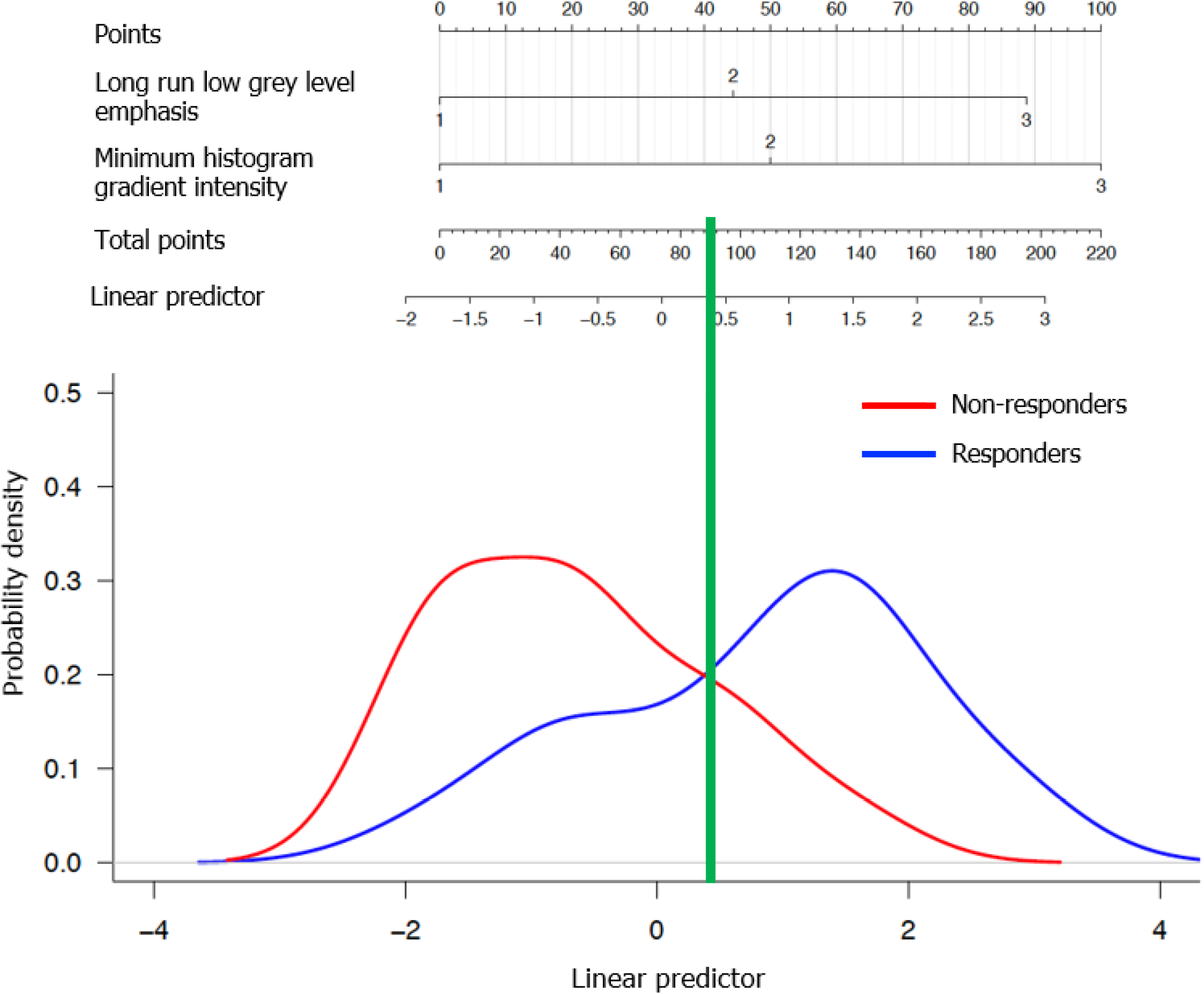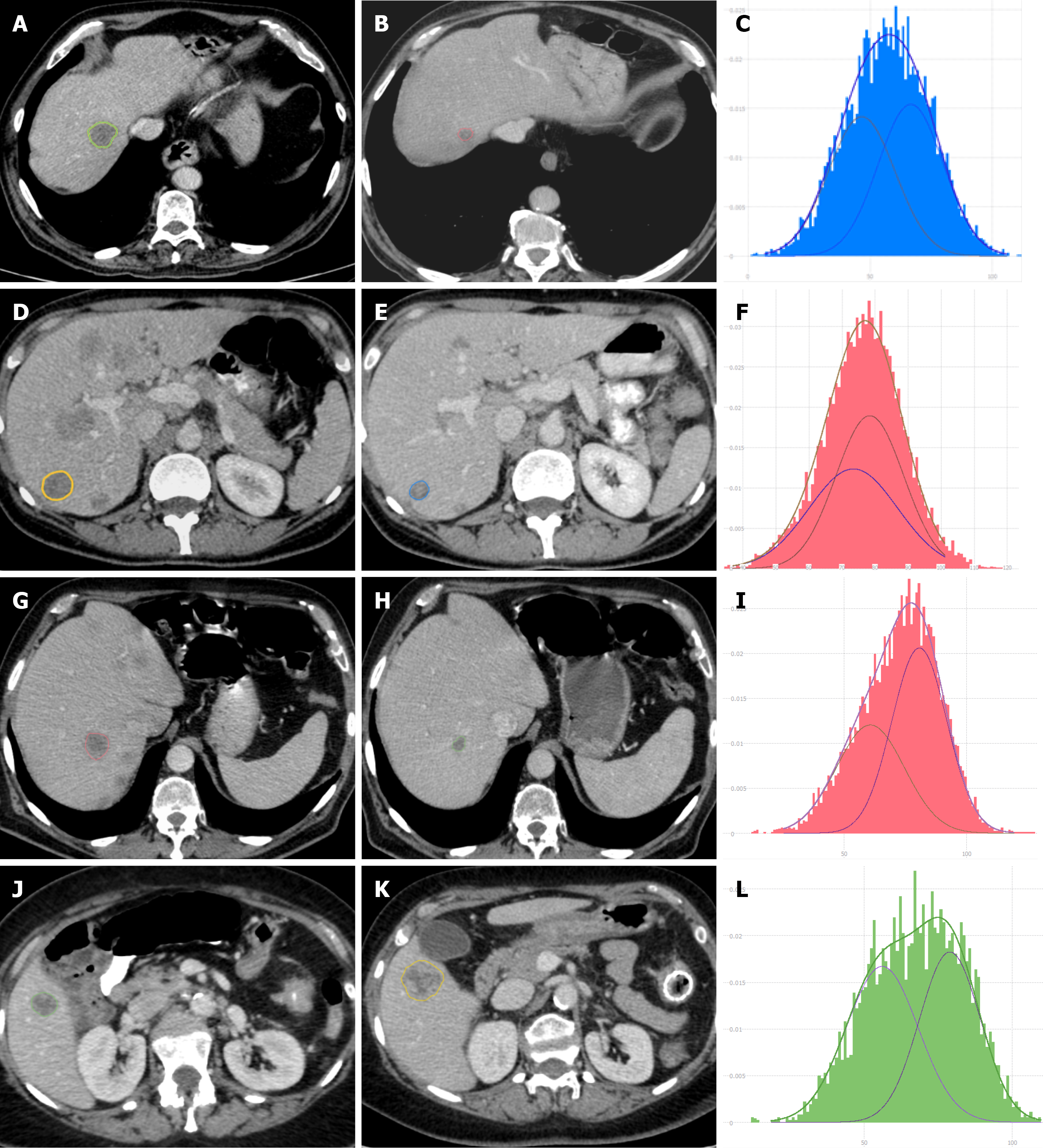Copyright
©The Author(s) 2021.
World J Hepatol. Jan 27, 2022; 14(1): 244-259
Published online Jan 27, 2022. doi: 10.4254/wjh.v14.i1.244
Published online Jan 27, 2022. doi: 10.4254/wjh.v14.i1.244
Figure 1 Patient selection flow chart.
RIS: Radiology information system; ICD-10: International Classification of Diseases and Related Health Problems, 10th revision; RFA: Radiofrequency ablation; CR: Complete response; PR: Partial response; SD: Stable disease; PD: Progressive disease.
Figure 2 Correlations among radiomic features associated with response.
Pearson’s correlation between radiomic features tertiles regarded as pseudo-continuous variables.
Figure 3 Prognostic nomogram of response to chemotherapy for patients.
Interpretation is as follows: for each predictor, determine the corresponding points by drawing a straight line up from the patient’s value; sum the points obtained for each predictor and locate the total sum on the upper point line. Identify the corresponding value in the linear predictor scale by drawing a straight line down. Values of linear predictor greater than the threshold (0.42) predict response; values less than the threshold predict no response.
Figure 4 Appearance of typical responding and non-responding liver metastases.
A: Responder pre chemotherapy; B: Responder post chemotherapy; C: Responder pre chemotherapy histogram; D: Responder pre chemotherapy; E: Responder post chemotherapy; F: Responder pre chemotherapy histogram; G: Responder pre chemotherapy; H: Responder post chemotherapy; I: Responder pre chemotherapy histogram; J: Non-responder pre chemotherapy with annular carcinoma of transverse colon; K: Non-responder post chemotherapy with metallic stent in the transverse colon; L: Non-responder pre chemotherapy histogram.
- Citation: Rabe E, Cioni D, Baglietto L, Fornili M, Gabelloni M, Neri E. Can the computed tomography texture analysis of colorectal liver metastases predict the response to first-line cytotoxic chemotherapy? World J Hepatol 2022; 14(1): 244-259
- URL: https://www.wjgnet.com/1948-5182/full/v14/i1/244.htm
- DOI: https://dx.doi.org/10.4254/wjh.v14.i1.244












